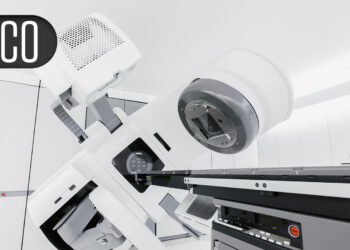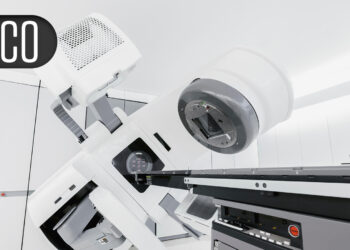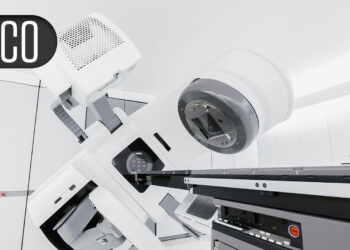A new accelerated theta-burst stimulation (aTBS) protocol was safe and effective for treatment-resistant depression (TRD) in a randomized controlled trial and may offer a viable alternative to more intensive and costly neuromodulation therapies, investigators said.
The protocol consists of three intermittent TBS sessions (1200 pulses each) per day spaced 30 minutes apart over 15 consecutive weekdays (45 sessions in total). The therapy targets the left dorsolateral prefrontal cortex using a craniometric approach.
This pragmatic aTBS protocol is “less expensive and less intensive” than the Stanford Intelligent Accelerated Neuromodulation Therapy (SAINT) protocol, which uses 10 stimulation sessions per day (1800 pulses each) for 5 days, lead investigator Andre R. Brunoni, MD, PhD, with the Service of Interdisciplinary Neuromodulation, Department and Institute of Psychiatry, University of São Paulo, São Paulo, Brazil, told Medscape Medical News.
“Importantly,” said Brunoni, the new, pragmatic aTBS protocol does not require brain MRI but rather uses a non-neuronavigated approach to position the coil, based simply on head measurements, which is widely used in repetitive transcranial magnetic stimulation (rTMS) protocols.
Promising Results
The triple-blinded, sham-controlled, randomized controlled trial included 100 adult patients (mean age, 41.7 years; 84% women) with TRD who failed to respond to two or more antidepressant treatments.
The primary outcome was the change from baseline in the 17-item Hamilton Depression Rating Scale (HDRS-17) scores at week 5.
The active aTBS group experienced a mean reduction in HDRS-17 of 54.7% compared with 31.8% in the sham group, corresponding to a mean improvement of 9.68 points with active treatment vs 5.57 points with sham treatment, and a medium-to-large effect size (Cohen’s d, 0.65; P < .001).
Response rates (> 50% HDRS-17 reduction) and remission rates were also higher in the active stimulation group (52% and 34%, respectively) than in the sham stimulation group (22% and 16%, respectively).
In an open-label phase, about three quarters of nonresponders in the sham group (a mean 3.3-point improvement in HDRS-17 scores) opted for active aTBS and achieved a mean improvement of 7.20 points in the HDRS-17 (mean difference, 3.88 points).
“The open-label phase provided evidence that most patients eventually responded to more aTBS sessions, in accordance with findings from a large naturalistic data study that applied once-daily rTMS,” Brunoni and colleagues noted.
Both active and sham aTBS were well tolerated overall, but scalp pain was more common in the active group (17.4% vs 4.4%).
Caveats and Cautionary Notes
Limitations cited by the study team included the relatively large sham response, although this is consistent with meta-analyses on sham TMS and general placebo responses in major depression.
The study was conducted at a single center, and the results may not fully translate to diverse clinical settings. Due to the open-label design, the researchers could not exclude those patients who would have further improved without additional aTBS sessions.
Commenting on this research for Medscape Medical News, Nolan Williams, MD, assistant professor of psychiatry and behavioral sciences and director of the Brain Stimulation Laboratory at Stanford University in Stanford, California, said this study offers a “valuable contribution to the literature” on aTBS for TRD, “providing evidence that a moderate-intensity protocol with fewer daily sessions and conventional targeting techniques can yield clinical benefits.”
However, Williams said it’s important to note that “significant separation from sham stimulation emerged only around weeks 4-5, suggesting a similar time course and efficacy to standard TMS protocols. This delayed response diminishes the practical advantage of performing multiple daily treatments compared to conventional, once-daily TMS regimens.”
Williams also noted that the open-label phase of the study showed that additional treatment sessions improved outcomes, “highlighting the importance of session frequency and intensity in accelerating response.”
“By contrast, the SAINT protocol, with its individualized neuroimaging-based targeting and intensive schedule of 10 sessions per day, reliably induces remission in an average of just 2.6 days in our open-label trials,” Williams said.
“While we commend [the authors] for advancing the conversation on accelerated TMS, their findings underscore that intensity and personalized targeting remain critical to achieving rapid and robust outcomes in treatment-resistant depression,” Williams added.
The study received funding from the São Paulo Research Foundation. Brunoni reported receiving grants from the São Paulo Research Foundation, receiving nonfinancial support from MagVenture during the conduct of the study, and holding equity in Flow Neuroscience outside the submitted work. Williams is a named inventor on Stanford-owned intellectual property relating to accelerated TMS pulse pattern sequences and neuroimaging-based TMS targeting; served on scientific advisory boards for Otsuka, NeuraWell, Magnus Medical, and Nooma as a paid advisor; and holds equity/stock options in Magnus Medical, NeuraWell, and Nooma.
Source link : https://www.medscape.com/viewarticle/novel-accelerated-theta-burst-stimulation-protocol-shows-2025a10005ns?src=rss
Author :
Publish date : 2025-03-07 12:01:00
Copyright for syndicated content belongs to the linked Source.














